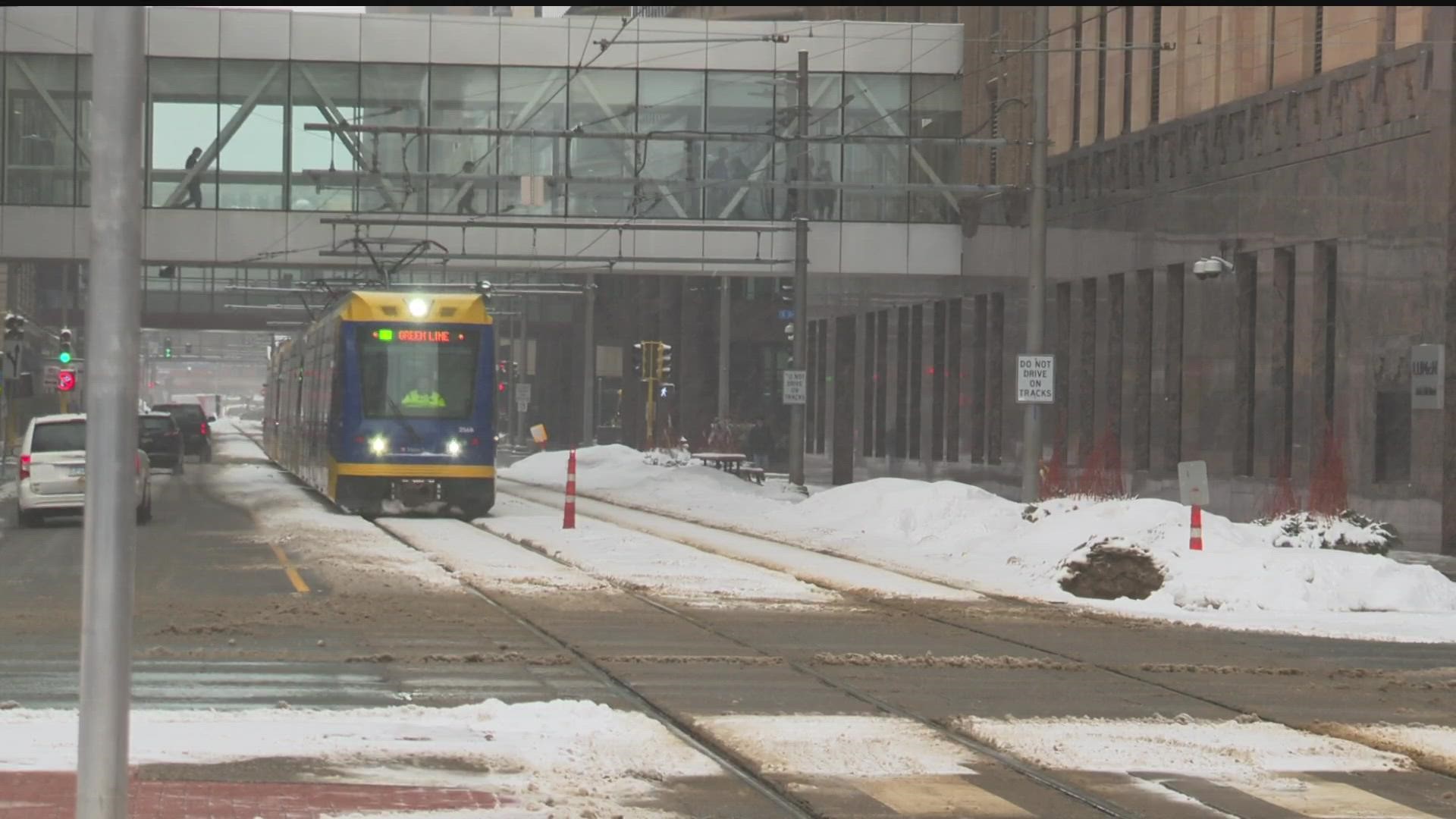ST PAUL, Minn. — Crime reports for narcotics and weapons each increased by over 145% from 2021 to 2022, according to data presented to the Met Council by Metro Transit Interim Police Chief Rick Grates.
“It’s definitely a national trend with the epidemic we’re seeing,” said Grates.
According to Metro Transit, crime reports for the following offenses increased:
Narcotics, by 182%
Weapons, by 145%
Liquor Law violations, by 92%
Assault, by 28%
Sueda Suleiman has ridden the rail for years and has noticed more shady characters.
“It makes me want to move or maybe get off the train and wait for another train to come,” said Suleiman
Metro Transit is currently implementing its Safety and Security Action Plan, which the organization says was the result of the Citizens League’s Transit Safety Conversation and a police work group from February 2022.
The plan consists of 40 “action items,” which Metro Transit breaks into three categories: improving conditions on the system, training and supporting employees and engaging customers and partners.
Drew Kerr, a spokesperson for the agency, said this isn’t something they can handle on their own.
“Transit is a part of the larger community,” said Kerr. “And what happens in the larger community is reflected in what happens on transit.”
The action plan includes having more transit representatives visible to the public, but law enforcement numbers have dropped.
“The Metro Transit Police Department is not unlike the situation that many of our peer agencies here in the Twin Cities and across the country, we need more police officers,” said Kerr. “Currently, we have 110 full-time officers That's down from where we were a few years ago.”
The most frequent crimes involve vandalism and property crimes. In October there were over 100 instances of such incidents.
Ridership on Metro Transit increased from 2021 to 2022, but still remains below pre-pandemic figures in 2019.
Overall ridership trends started declining around 2014, when ride-sharing apps like Uber and Lyft gained popularity, according to Dr. P.S. Sriraj, the director of the Urban Transportation Center at the University of Illinois Chicago.
Watch more local news:
Watch the latest local news from the Twin Cities in our YouTube playlist:

